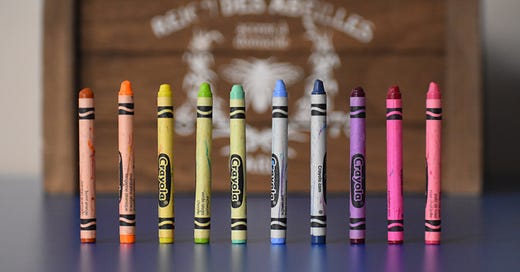I think we hear (or read) the word demand and instantly think Taylor Swift tickets. That’s one type of demand, but it doesn’t need to be at that scale for it to matter.
I remember when Drake first came out and fans, blogs, regular people and even other musicians were dying to hear his first album after being signed to Cash Money Records.
Before that, a high school basketball phenom created so much buzz because of his play, ESPN aired his high school game on its network. One guess who that phenom was?
Those are both extreme examples, but the goal to creating buzz remains the same whether you’re Drake or a writer reading this right now. The goal is to get people excited about you and your project; either or both.
How do you do that?
You need to perform and then create a story around that performance. The story around LeBron when he was still in high school was he is the best high school prospect of all time. That one question sparked debate from sports casters, NBA players, and the media in general. It added a story to what was essentially just another really good high school player, something we’ve seen over and over again.
But LeBron’s performance was good enough to add fuel to that story and let it spread into popular culture. The demand to see LeBron play was so high, ESPN saw the opportunity to gain enough ratings to make airing his high school game make sense.
Because of that same demand, LeBron was able to leverage a shoe deal before he took his first dribble on an NBA court. By the time it came to draft day, everyone knew whose name would be called first. The story had already been told, now it was just coming to fruition.
You can do the same thing. Every person and project has several stories. For my novel Boys and Girls Screaming, the story I told was that this book is about teenagers taking accountability for their own mental health. I’ve carried that story to earn tens of thousands of dollars in speaking fees and workshops, and sold a few books along the way.
What you need to figure out is which story is most simple, most relatable, and will generate the most curiosity. Once you do those things, you’re one step closer to creating real demand.
That’s one way to go about creating demand. The other thing you can do is take the luxury fashion approach. What do I mean? I mean make your product exclusive.
But how do you do that with books? You want to sell the most books possible so exclusivity doesn’t really work, right? No, you’re not right. Let’s talk this through.
There are actually several ways you can trigger demand through exclusivity. The first is through early bird pricing and packaging. If you offer readers a discounted price before a certain date, that is exclusivity. The urgency of the restricted time frame creates a short term demand.
The other thing you can do is create unique versions of your work. For example, maybe you sell 100 copies of a special book cover by an indie artist. Maybe you sell 50 copies that includes an additional section. Maybe you take things a step further and offer the first draft of your novel in its original form. That would be a premium version of your book which means you can charge premium prices.
And again, it doesn’t need to be Beyonce level for it to matter. I have over 1,000 subscribers on this newsletter at a 40% open rate. That’s at least 400 people engaging with my stories every week. This specific post is paid, which means it’s exclusive. And depending on how much value free subscribers see in this post (they get a snippet), it will incentivize them to join the exclusive club. See how that works?
Creating demand is key to your success as a writer. How you perform, the story you create around that performance, and creating exclusive offers is the blueprint. It’s how you go from average to superstar.




